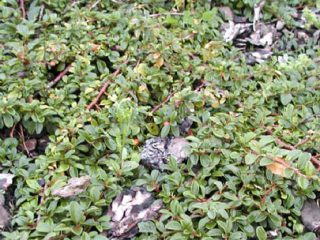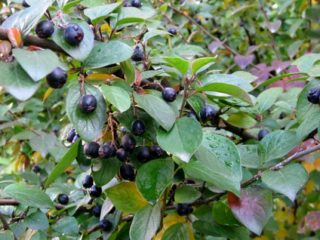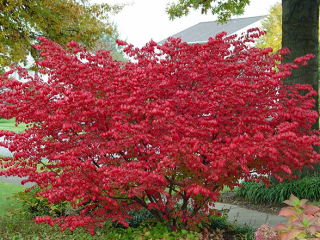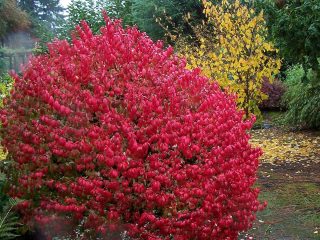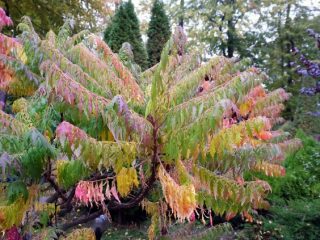Content
Dummer's cotoneaster will decorate any yard. This plant is used in landscape design and is increasingly found in garden and suburban areas. This is not grass, but a special shrub that will decorate not only a smooth lawn, but also various design objects.
Description of Dummer's cotoneaster
Dummer's cotoneaster is one of the varieties of cotoneaster. Belongs to the Rosaceae family and is an evergreen plant. A wild variety found in China. Similar to a horizontal variety of cotoneaster. The shoots spread along the ground, which allows you to create a beautiful field or pattern on the site if trimmed correctly. The growth width of one shrub is up to 1.5 meters. The branches do not rise more than 30 cm above the ground. As a result, Dummer's cotoneaster is not very tall, and therefore is excellent for decorating and covering the soil.
The leaves of the shrub are leathery and elliptical in shape. The flowers are red in color, and the fruits (which are not edible) ripen by September. The average size of a cotoneaster leaf is 1.5–2 cm. The color of the leaf is green on top and has a grayish tint underneath.
The peduncle has 2–3 buds. The result is several white flowers with five petals. Bees happily pollinate the flowers of Dummer major cotoneaster and other varieties. This is an excellent honey plant that attracts insects from long distances.
The cultivated plant has been bred for a little over 100 years, so the culture is not yet as popular as many other varieties. But in Russia, Dummer's cotoneaster eichholz has been grown for about 50 years, since it is inferior in popularity to horizontal and brilliant cotoneaster.
The plant tolerates unfavorable climatic conditions well, so it is successfully grown in northern latitudes. It feels uncomfortable in areas with a lot of moisture and high soil moisture.
There are several popular varieties of Dummer cotoneaster, descriptions and photos of which are most common:
- Cotoneaster Major;
- Eicholtz;
- Dummer's cotoneaster streibs findingling.
In addition, Dummer's Mix cotoneaster is often used, as it perfectly decorates rocky surfaces and unsightly areas.
Drought resistance, frost resistance
This shrub is characterized by high drought resistance. The plant can survive for a long time without watering and does not require regular rain. Therefore, it is successfully used in various climatic conditions and feels comfortable in central Russia.
Another plus for the Russian climate is that cotoneaster tolerates frost well. Therefore there is no need to cover it. An evergreen plant can please the eye all year round. But it is important to understand that for the Far East and Siberia the frost resistance of Dummer's cotoneaster is not enough, so you will have to use another plant for landscape design.
Resistance to diseases and pests
As for diseases, they rarely affect a shrub like Dummer's cotoneaster. If the soil under the plant is too wet, then there is a possibility of infection with a fungal pathology such as fusarium. The disease most often affects the roots and lower part of the stem. It is not difficult to fight such a disease - it is enough to remove all infected tissues that have obvious signs of fungal damage. After this, it is imperative to treat with a fungicide.
There are also preventive measures that help prevent you from contracting this fungus. First of all, you need to monitor soil moisture, not get carried away with watering and ensure normal drainage. Regular loosening of the soil will also be a preventative measure. This way, the cotoneaster roots will be able to better receive air, and the soil will not retain moisture as much.
But pests are very fond of Dummer's horizontal cotoneaster. This plant can infect: spider mites and other types of mites, scale insects, as well as apple aphids. Therefore, it is necessary to carefully monitor the first symptoms of the appearance of pests on the plant. It is mandatory to treat cotoneaster several times a year with special pest control agents.
To get rid of pests in the early stages of pest detection, it is enough to use natural solutions, such as:
- yarrow decoction;
- tobacco decoction;
- soap-ash solution;
- decoction of marigolds.
But in any case, a one-time treatment will not do. The owner will need a course that consists of 3-4 treatments carried out at intervals of 6-7 days. Then you need to monitor the plant to see if the pests have died.If such methods do not help or the stage of damage is severe, then strong chemicals will be needed, which are sold in specialized stores. In this case, processing must be carried out according to the instructions.
Dummer's cotoneaster in landscape design
In landscape design, Dammer Stockholm cotoneaster is used in a very diverse manner, since it all depends on the variety and variety. For example, the dwarf cotoneaster Dummer Major spreads low, making it an excellent ground cover. With the help of such a covering, it is possible to hide from prying eyes all sorts of uncovered clearings, unsightly areas, as well as compost pits, areas with garbage and those parts that cannot be landscaped.
Cotoneaster Eicholz is suitable for hedges and fences, as well as for creating attractive borders. Such a plant can decorate both garden plots and paths in the area.
If the shrub is trimmed correctly, it can often and successfully be used to create hedges and evergreen sculptures.
The bush also looks great if you create a bright green spot from it that will attract the attention of visitors. Since the shrub thrives on loose soils and has a powerful root system, it is justifiably used to decorate slopes and hills. Those who have ever seen Dummer's cotoneaster in a photo will definitely want to decorate their plot with this plant.
Shrubs are often planted in rock gardens, on the lower and middle tiers. And also in landscape design, this plant is recommended to be used to improve rocky soils.
Planting Dummer's cotoneaster
Dummer's cotoneaster is an unpretentious plant in terms of planting and care. Planting is done with seedlings.The procedure is carried out in the spring, but it can also be done in the fall. When planting in autumn, it is important to do it before frost, preferably during leaf fall.
Dummer's cotoneaster is a sun-loving plant that tolerates open sun well.
The landing algorithm is as follows:
- You need a hole 50 cm deep and the same width.
- Brick or pebbles are laid on the bottom for drainage.
- A layer of earth is poured onto the drainage. It should consist of peat, humus and sand. If necessary, you can add 200 grams of lime.
- Place the seedling in the prepared hole and bury it.
- The distance between seedlings is 50 cm.
When planting, the root collar should be flush with the surface. Experts recommend mulching the surface near the bush with an 8 cm layer of peat. If the bush is to be used as a hedge, then it must be planted in trenches.
Dummer's horizontal cotoneaster does not tolerate excess moisture well, and therefore when choosing a planting site it is necessary that the depth of groundwater be at least two meters.
Aftercare for cotoneaster
Plant care includes watering, pruning, and fertilizing. As for watering, cotoneaster really does not like excess water. Even in dry summers, it needs to be watered no more than once every two weeks. If there has been even light rain, watering can be done once a month. A bucket of water is poured under each bush - this is enough for the plant.
The basis of care is considered to be frequent loosening of the soil, as well as weeding of bushes to prevent them from intertwining weeds. Cotoneaster is frost-resistant, but in winter experts recommend pressing branches that are too high to the ground to prevent them from freezing.
In order to form the necessary hedge, the plant needs to be trimmed regularly. It is recommended to pinch the growing point of two-year-old shoots, then they will bush. After the pinching procedure, the young branches begin to grow again, only this time creating the desired shape of the bush.
The shoots are pruned after the bush itself produces green mass. According to the rules, up to a third of the green mass can be removed from a bush in one pruning. The bush can be formed both in height and in the required shape. The shape is most often made using a special wooden frame. The feeding algorithm is simple:
- In spring and autumn, add a bucket of humus per 1 square meter.
- In spring, 30 grams of mineral fertilizers per bucket of water.
- In summer, superphosphate and potassium are added under the bushes.
Organic fertilizers in the form of manure have a very positive effect on the growth and strength of cotoneaster.
Diseases and pests, methods of control and prevention
Dummer's cotoneaster is root-resistant and resistant to most diseases. More often it is affected by pests. For example, apple aphids. If it appears, the shoots will bend and dry out, while the leaves will begin to wrinkle.
The mite is the most dangerous and common pest on cotoneaster. In order to avoid its appearance, it is enough to treat the bush with a solution of shag, tobacco or yarrow. In this case, the mite will not attack the plant. If the pest has already attacked the cotoneaster and there is damage, then insecticides should be used.
Conclusion
Landscaping is popular, and more and more people want to properly and beautifully decorate their areas near their home.Dummer's cotoneaster is used as one of the ornamental plants from which evergreen sculptures are formed, as well as hedges and rock gardens. This is a beautiful shrub, the width of its crown reaches one and a half meters. The fruits have no taste, but are not poisonous. Therefore, those who have children need not worry. And in spring the entire hedge will be covered with white flowers with a pleasant aroma.




